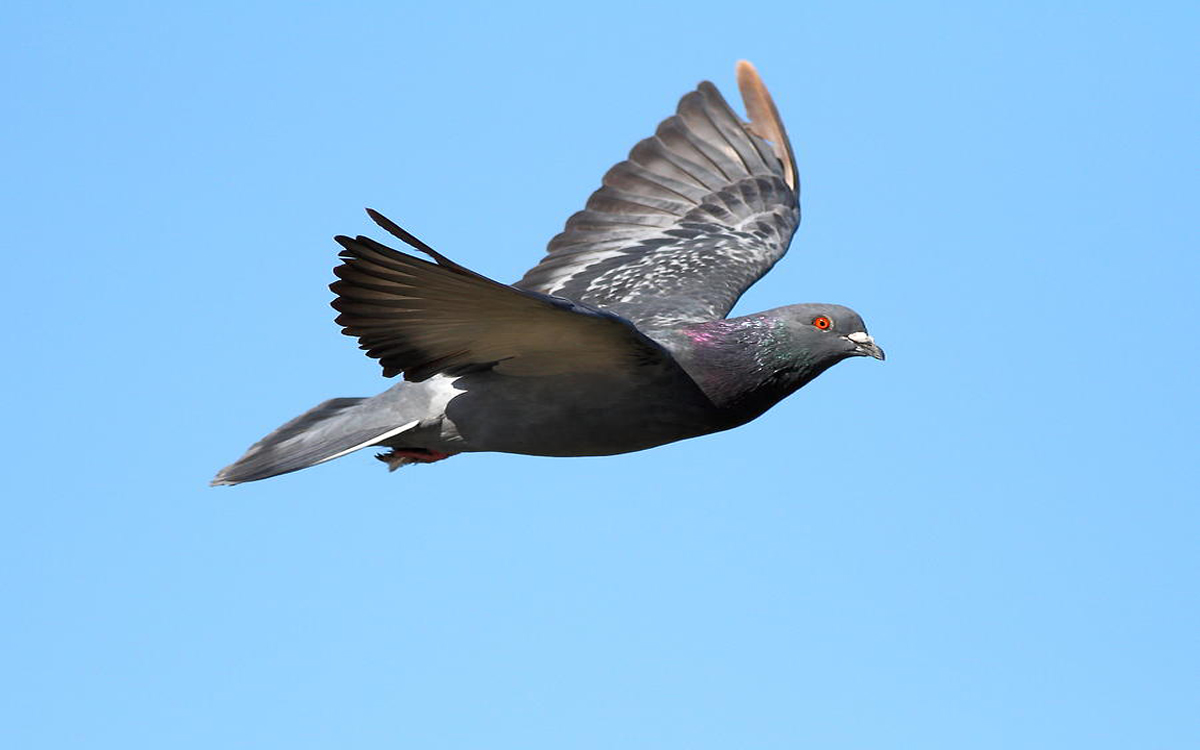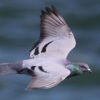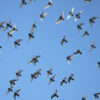
Biosecurity for Pigeon Lofts
For those who do not understand the term “biosecurity” we would offer the following. In its simplest terms, biosecurity is what you do to stop the spread of disease within and to your loft. On a broader scale, it is a formal system of stopping the movement of a bacteria or viruses from one animal to another, from one loft to another, or in some cases, from one person to another. Biosecurity measures are not necessarily expensive. In fact, except for the cost of some disinfectant products and, perhaps, for those who want them, disposable smocks, hats and shoe covers, biosecurity costs can be controlled, and they should be minimal. In most cases, lofts can be very cheaply and quickly adapted to implement adequate biosecurity measures, even if construction of barricades or fences is necessary.
Most handlers already apply some form of effective biosecurity measures:
Cleaning the fountains twice a day is biosecurity;
Cleaning and scraping perches is biosecurity;
Spraying the loft for parasites is biosecurity;
Storing feed in rodent proof steel bins is biosecurity;
Wearing a hat in the loft is biosecurity;
Isolating new stock for at least 14 days is biosecurity;
These are common biosecurity measures that most of us do everyday, we do it to prevent the spread of disease. We have just never thought of it in such terms, in the sense of “biosecurity” terms! Sometimes, simply changing the order in which you approach a task provides adequate biosecurity, such as the way you handle your feed bags (if they’re stored in the loft).
Based on our understanding of the sources and transmission of various disease agents, the following recommendations have been designed to prevent the spread of viruses and bacteria between racing pigeon lofts and the introduction of new infections to susceptible birds. Our recommendations have been divided into best and alternate practices so that these recommendations can be adapted to every loft. We have outlined these recommendations based on the three key principles of biosecurity, isolation, traffic control, and sanitation.
Isolation refers to the confinement of your birds within a controlled environment. A fence keeps your birds in, but it also keeps other animals out.
Perimeter control. Every flock must be isolated from ALL other birds, especially any kind of chicken.
BEST PRACTICE: The best way to isolate a loft is to install complete fencing around the perimeter of the loft will keep other birds out.
Alternative methods to achieve isolation:
If there are no birds in your neighborhood or you have no neighbors, then you already have a buffer zone that establishes isolation.
If your neighbor has chickens in an enclosure close to your loft, you might ask him to move it, or move your loft, or better still, move both as far apart as is physically possible.
Keys to achieving isolation:
* Gates can help to achieve isolation, sometimes without perimeter fencing. A gate that crosses a driveway is a very effective way to stop vehicle traffic. But, gates must be kept closed in order to be effective.
* A buffer zone between lofts or flocks must be achieved, whether or not there is good perimeter fencing. Establishing a buffer zone may require negotiation with neighbors to house their birds on a part of their property away from an existing loft or relocation of a loft to another part of a property.
Introduction of new birds to your flock. New birds entering a loft can bring unwanted disease agents with them.
Quarantine new birds for a minimum of 14 days – this is a must.
Pre-purchase testing, if economically feasible and available.
Avoid contact with any other birds, in particular chickens. Other bird species can carry disease agents that pigeon owners do not want in their lofts. The following contacts are listed in descending order of their importance in disease danger.
i. Live bird markets, auctions, and shows. ii. Dead birds, especially pigeons. iii. Pet or feed stores that sell excess racing pigeon stock. iv. Hunting (any species of bird or animal).
a. BEST PRACTICE: Avoid contact with ALL other birds, in particular, chickens. When there is contact, change clothes and shower before returning to your loft. This practice is critical when the most dangerous contacts on the list have been made.
b. Alternative practice: Avoid the most dangerous contacts with other birds. After contact with birds owned by trusted hobbyists or friends, change into dedicated protective clothing that will be left in the loft and wash your hands thoroughly with soap and water before returning to your loft. Hand washing is one of the simplest and most effective biosecurity measures available to us.
Prepare a plan for self-quarantine. When one member of the club has disease or illness in his loft, he should be prepared to take extra steps to prevent the spread of disease to other members of the club. Those steps should include not moving birds, stopping all non-essential visits, and notification of other lofts that may have been inadvertently exposed.
Traffic Control includes both the traffic onto your premises/property and the traffic patterns of both you and visitors on and within your premises/property. Sometimes, simply changing the order in which you approach a task provides adequate biosecurity.
1. Visitor policy. The easiest way to prevent disease spread by visitors is to limit visitors. Visitors can bring disease agents into your loft.
a. Limit visitors to the loft. This is especially critical in times of high risk, for example, during breeding and during the active racing series in your area.
b. Protective clothing. Visitors to the loft should be required to wear protective clothing, including overshoes or covers that will prevent the tracking of material on shoes. Hand sanitation must be included for visitors because people cannot resist touching your racing pigeons when they visit.
c. Signs to stop inadvertent visitors must be posted. A sign should be placed on gates or doors to stop people from accidentally wandering into a loft, and although this is a simple step, a sign can be very effective.
Sanitation addresses the disinfection of materials, people and equipment entering your property and your loft and the cleanliness of the personnel on your property and your loft.
1. Vehicle disinfection. Vehicles that have been near other birds can easily carry disease agents into the vicinity of or directly into the loft. Vehicles used to transport feed from feed supply houses are especially susceptible to contamination and your routine for hauling feed should be carefully reviewed towards the most effective biosecurity measures.
a. Keep all vehicle traffic away from the loft through the use of gates and signs. The drivers of vehicles that have to enter the loft should be questioned to make sure they have not been near any birds within 48 hours. Vehicles that are covered in mud or other gross contamination should be washed before they enter the property or the vicinity of the loft.
2. Equipment disinfection. Equipment that is used and brought into a loft can carry disease agents if it has been around other birds.
a. Keep equipment that has been around any other birds out of the loft. If equipment must come into the loft and has been around other species of birds, then fully clean and disinfect the equipment before it enters your loft.
Biosecurity and racing
It may seem that the sport of racing pigeons destroys all attempts to achieve biosecurity in a loft. Several of the things we have said you should avoid, all happen in a race. However, biosecurity can also be applied to racing to reduce the chances that disease agents are introduced at races.
Biosecurity for Birds Returning from Races
There are two possible ways to approach racing, both are legitimate and each has its own pro and cons. Which method is selected, is up to the individual loft owner after a careful consideration of the risks and benefits associated with each approach. The two possible approaches to biosecurity follow:
1. Consider the racing club or combine as a single biosecurity unit. In other words, birds within a club or combine are treated as if they belong to the same loft. So, when you introduce a new bird to your loft if it came from a loft in your flying club, then it is not considered as an outsider. When birds come in from a race, it can be introduced immediately back into the loft because it has just been out flying with its loft-mates.
a. Pros: This method is easy to apply because it requires no additional quarantine for birds returning from a race.
b. Cons: Any member of the club can introduce disease into the club and everyone practicing this method of biosecurity will get the disease.
2. Consider all lofts other than your own as sources of disease. All birds returning from a race are quarantined for 14 days before they are re-introduced to the loft.
a. Pros: This method puts the owner into control of the fate of his loft. Overall, it is a safer method.
b. Cons: There is a certain amount of extra labor and planning that is required to achieve this type of biosecurity.
Biosecurity at Shipping and the Club
No matter what biosecurity strategy you choose for your own loft, there are certain common sense things that must be part of biosecurity on a club basis.
1. The transporter should be clean and sanitary before birds are placed in it.
2. The transporter should not be allowed to come close to any individual loft. The transfer of birds must occur away from individual lofts so that the transporter does not spread disease between lofts.
3. No sick birds should ever be placed in the transporter or brought to the club.
4. Hands should be washed before birds are handled. Birds from one loft can be handled as a group without hand washing or hand sanitation between birds, but hand sanitation must occur before handling the birds from a different loft.
Biosecurity on Transporters
Transporters must be fully cleaned and disinfected between uses.
1. Removal of all organic material (feces, feathers, mud) from all surfaces including wheel wells, and undercarriage. Although not essential, high pressure, hot water, with detergent works very well for the cleaning process.
2. Disinfection of all surfaces. There are many disinfectants, which work well to inactivate disease agents but, none of them work well if cleaning is inadequate.
3. Inspection. It is critical that someone take a critical look at the job of cleaning and disinfection that has been done to assure that all organic material has been removed.
4. Completely dry the transporter before use. Drying itself is a good way to kill disease agents and allowing the transporter to dry will ensure its sanitation before it is used again.


